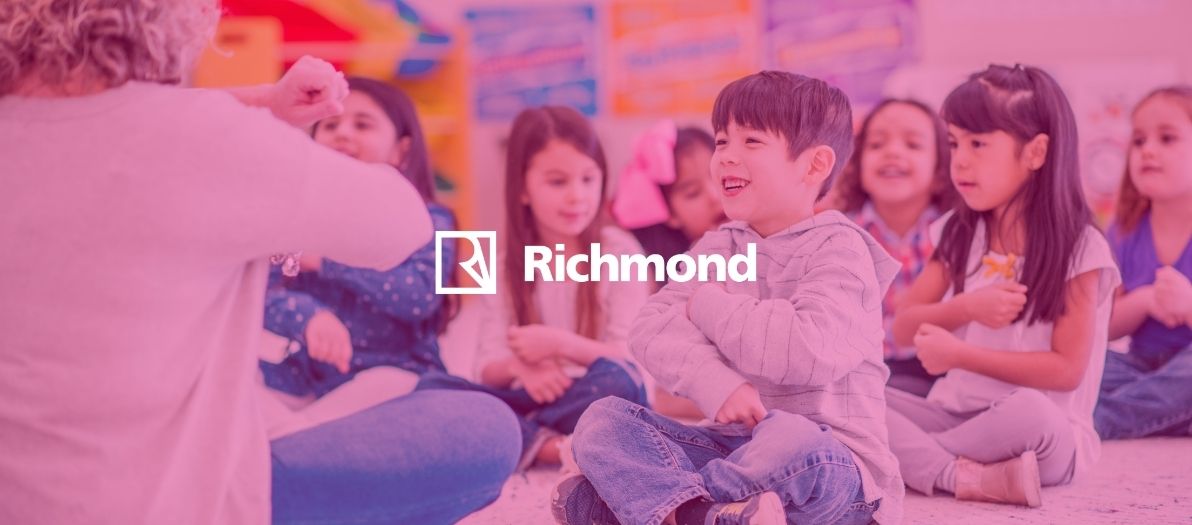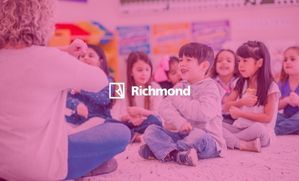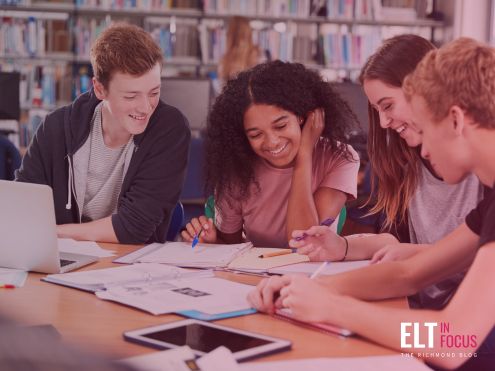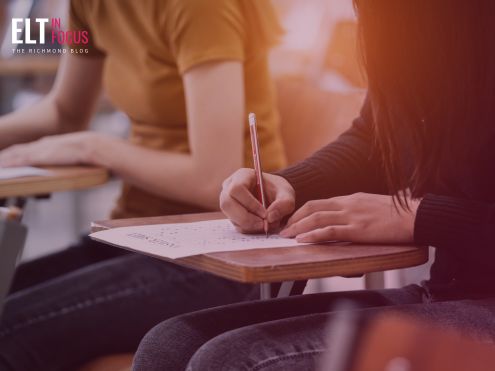Critical thinking is an active, purposeful, organized, and metacognitive process that can be explicitly taught. Music can be used to develop critical thinking, which includes the ability to use logic, reasoning and creativity when problem solving.
Developing Critical Thinking Through the Arts
Susan Mackey and Rose Ann Schwartz
The womb as our first musical classroom
From the time our senses first light up in the womb, we learn through rhythm. The oscillation of our mothers' bodies, the cadence of her breathing, the jostling of her organs as she twists from side to side, the beating of her heart, the expansion and contraction of her lungs, the vibration of her voice, the sloshing of our liquid environment, all are constructions of our first classroom that stimulate our developing minds – the basic elements of music.
The theories that music generates brain activity is solidly supported by science. While low-frequency music encourages corporal stimulation, high-frequency music – those tones heard in utero - are what generate metacognitive activity in the brain.
So, if we can capitalise on this natural learning dynamic in our lessons, we help our students to become more expansive thinkers. Pre-school teachers regularly use music in their classes to help their young learners. If we continue this at all levels – listening to and adopting the study methods used in music classes – we will be helping our students to gain those critical skills they will need in the future.
Music as a viable subject to use in developing critical thinking
In the past, the dominant view held by the educational community was that the study of only certain subject areas was sufficient to promote students’ critical thinking skills. This conviction changed when John Dewey insisted that any school subject promotes critical thinking if lessons are presented through problem-solving dynamics and if reflection on learning is encouraged. Since listening to and the study of music offer the challenge to which there is no single, standard goal, both can promote flexible, divergent, lateral, and deep thinking when lessons are intentionally designed with the expectation of developing these abilities.
But let’s take a step back. Perhaps because it is difficult to define what critical thinking is, planning lessons to develop this type of thinking is challenging – so much so that in our confusion, we often just put our hands together and pray that expansive thinking inherently happens. Unfortunately, this usually isn’t true. Critical thinking strategies need to be very intentionally taught and because there is no one critical thinking technique that suits every situation, but rather hundreds and even thousands of them, different strategies need to be practiced depending on the circumstances, For this reason, we need introduce as many techniques as possible to our students so that they have a toolbox of tactics to choose from given the challenge they are facing.
Definitions of critical thinking
But let’s stop tiptoeing around the issue: what is critical thinking? Well, in an effort to clarify a complicated cerebral dynamic, here are a few ways we can define it:
- Let’s begin with Socrates (who better!) and his Socratic Methods. In this case, critical thinking is evident when students consider opposing positions of any argument, search for evidence to justify their conclusions, and challenge each other with informed questions.
- Another accepted definition is when students rely on self-correction, their judgments and decisions are based on concrete investigation, and the strategies they acquire can be used in environments other than scholastic.
- Philosophers Richard Paul and Linda Elder propose that critical thinking occurs when your ability to process information improves, when all relevant data you gather can be used to pose questions of vital significance, when you examine and can justify conclusions and solutions, and all the while you are open to other perspectives.
Music, studies show, helps us to do these mental gymnastics. According to language and arts expert Emma Walton Hamilton, for example:
We know, absolutely, for a fact, that there is no better way for children to learn critical thinking skills, communication skills, empathy and tolerance than through music. This is true across every boundary, across cultural and socio-economic boundaries. Music is a great leveler in terms of unifying our world.
Julie’s Greenroom - Netflix
Music stimulating different types of thinkers
Why is music such a stimulator of deeper thinking? Well, one reason is because students listening to certain types of music in class, and students of music, are encouraged to explore their feelings regarding the different kinds of emotions they have when playing and/or composing, and learn to honour differing reactions to these experiences. This leads to tapping into more extensive parts of our brain, which generates:
- divergent thinkers: students able to consider multiple correct answers for different situations. This is diametrically opposed to convergent thinkers, who are trained in the more traditional (teacher-centred) dynamic in which they expect to find only one correct answer;
- flexible thinkers: learners who are able to think of many different kinds of possible ideas in response to a question, problem or situation. This is fundamentally different from fluent thinkers. An example is when a fluent thinker is asked where to go for lunch, he may think of five possibilities, but they may all be pizza joints. On the other hand, if a flexible thinker is asked the same question, she might propose a restaurant specializing in Mexican food, sushi, vegetarian, a la carte or a buffet;
- elaborate thinkers: those who are able to embellish, expand on or notice combinations of ideas. An elaborate thinker would provide a variety of reasons for choosing one of the restaurants proposed by the flexible thinker (the service, the location, the presentation of the food, eco-friendly, etc.);
- original thinkers: non-conformists who are able to elaborate unique ideas in response to a question, problem or situation. When asked where to go to lunch, they might suggest buying food for a picnic and eating in a park or on the roof of a building.
Music methodologies that we can incorporate in our lessons
So, do we have to be music teachers to generate these types of expansive thinkers in our classes? The answer to that is easy: it’s always the methodology we use, not the subject or tools we have available, that determines results. (So – no, not necessarily!)
With that in mind, the following are some easy ways of achieving the outcomes we often find in students of and listeners to music. You will see that these strategies catalyse expansive, deep, critical thinking:
Driving questions - Beginning a lesson, a unit, a project with a driving (enquiry, key) question opens opportunities for students to consider multiple scenarios, answers, justifiable conclusions. The best driving questions begin with “how,” “why” or “what if…” So, depending on the subject you teach, you could challenge your students with the following example questions:
- How do you feel about the sound of silence?
- What if the Visigoths had not conquered the Iberian Peninsula in the 5th century, but in the 21st century? How would your life be different?
- Why do you learn and how will learning different subjects change you in the future?
- What if you had the choice to repaint your bedroom? Which Primary, Secondary and/or Tertiary colours would you choose and why?
- What if you had the choice to live next to a river? Would you choose to live near the Upper, Middle or Lower course? Explain.
- What if the 3rd conditional did not exist in English? How would that affect your conversations with your English-speaking friends?
A variety of soundtracks - Soundtracks for videos, movies, television programmes and podcasts are composed and/or chosen very deliberately and so can be used as the basis for thinking routines that include Hearing-Thinking-Questioning-Thinking-Verbalising-Making Information Visible.
You can play soundtracks and elicit responses from students regarding events, plot predictions, and mood, and then they create collages that include colour, value and texture, and depict what they have envisioned and felt through the musical exploration.
Diagrams, graphs, charts, maps - Before explaining different visual qualifiers about a new unit, you give students the opportunity to draw their own conclusions about what their explicit purpose may be. They need to support their reasoning with evidence and be prepared to defend their conclusions.
Rhythm, movement, corporal language - Students extend meaning of different educational material with their bodies through scenarios, drumming, rhyme, and other forms of visible and corporal language. They need to present linguistic explanations of their presentations as well.
Auditory textual representations - Students are asked to convert texts into song lyrics of any genre with short texts justifying their choices including the history of the style they have chosen.
So, there goes our introduction to the power music has to create more expansive thinkers.
We all need to do all we can to make sure they are more skilled than technology so as not to be redundant before they even leave school.
Join us for more blogs designed to support you in as many ways as possible in the future and thank you for taking the time to consider more ways to augment your students’ thinking and learning competences for the 21st Century!









